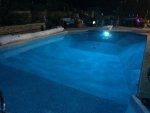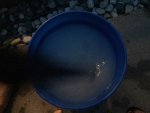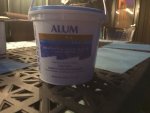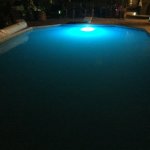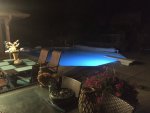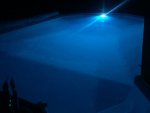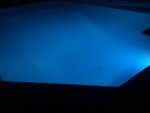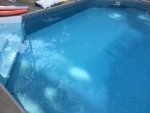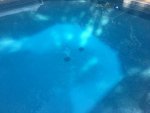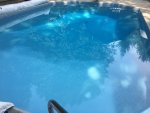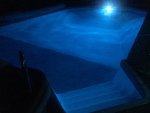EDIT: This was separated from the thred "Phosphates: Are They Worth Removing?" in the deep end.
For continuity and background on high phosphate levels on gas heaters for well users and the methods of phosphate removal dscussed in this branch, please see this link, from about page 16 onward: Phosphates.....are they worth removing?? - Page 22 )
***
Lol. But I'm not allowed to use the chainsaw anymore after what happened last time I tried to cut up a tree
Here's my rough outline of experiment at removing 25,000 ppb - shared for future well users or folks like Glen from Bloomfield who had po4 scaling in his heater last year:
1. Based on chem calcs back on pg 16, I think I will need about 20 lbs Aluminum Sulphate to remove much/most of the PO4 in my 24k gallon pool - vac to waste, not communicating with filter.
2. Then I will treat monthly with the Seakleer commercial Lanathum chloride, which is better in smaller doses (and much more expensive but runs through filter at smaller doses.)
Matt, I don't know where to find this out so if you know, please share:
1. Would the Alum also floc salt? CYA? CH? Eg. What all does the charge combine with, beyond phosphates, crypto, etc. (not that I have crypto...but this is a treatment for it...)
2. I do not have a heater bypass. Is this a known problem in any way? Yes, the ph will be lower during the treatment, eg. About 24 hours until I rebalance. The alum itself will drop the ph a bit...plus is most effective just under 7 according to what I've read.
The heater guy and I discussed a bypass loop in depth but I just don't have room to do it right and he shares that opinion. We'd decided if heater went down in winter I'd do an emergency bypass with flex if I has to wait a day or so for service (he'll be in the Keys
3. I won't be running the swg, but is there any risk of combined particles sticking to the plates? I have a dummy I could plumb, but I'd rather not if I didn't have to.
Thanks in advance.
For continuity and background on high phosphate levels on gas heaters for well users and the methods of phosphate removal dscussed in this branch, please see this link, from about page 16 onward: Phosphates.....are they worth removing?? - Page 22 )
***
Lol. But I'm not allowed to use the chainsaw anymore after what happened last time I tried to cut up a tree
Here's my rough outline of experiment at removing 25,000 ppb - shared for future well users or folks like Glen from Bloomfield who had po4 scaling in his heater last year:
1. Based on chem calcs back on pg 16, I think I will need about 20 lbs Aluminum Sulphate to remove much/most of the PO4 in my 24k gallon pool - vac to waste, not communicating with filter.
2. Then I will treat monthly with the Seakleer commercial Lanathum chloride, which is better in smaller doses (and much more expensive but runs through filter at smaller doses.)
Matt, I don't know where to find this out so if you know, please share:
1. Would the Alum also floc salt? CYA? CH? Eg. What all does the charge combine with, beyond phosphates, crypto, etc. (not that I have crypto...but this is a treatment for it...)
2. I do not have a heater bypass. Is this a known problem in any way? Yes, the ph will be lower during the treatment, eg. About 24 hours until I rebalance. The alum itself will drop the ph a bit...plus is most effective just under 7 according to what I've read.
The heater guy and I discussed a bypass loop in depth but I just don't have room to do it right and he shares that opinion. We'd decided if heater went down in winter I'd do an emergency bypass with flex if I has to wait a day or so for service (he'll be in the Keys
3. I won't be running the swg, but is there any risk of combined particles sticking to the plates? I have a dummy I could plumb, but I'd rather not if I didn't have to.
Thanks in advance.


